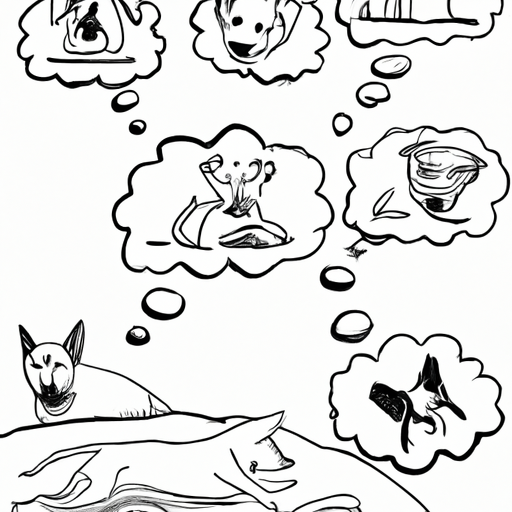As a dog owner, you’ve probably noticed your dog sleeping on their back, with their belly exposed and paws in the air. While it might seem like an awkward sleeping position, it’s actually quite common among dogs. In this article, we’ll explore why some dogs sleep on their backs and the different factors that influence this behavior.
1. Comfort and Temperature Regulation
Just like humans, dogs will often choose the most comfortable position for sleeping, and for some dogs, that happens to be on their back. Sleeping on the back allows dogs to stretch out their muscles and joints, which can be especially beneficial for dogs with arthritis or other joint issues.
Moreover, dogs have fewer fur on their bellies, and by sleeping belly-up, they can better regulate their body temperature. This is especially common during hot weather when dogs need to cool off.
| Fur | No Fur | |
|---|---|---|
| Top | X | |
| Belly | X |
2. Expressing Trust and Submission
Dogs are pack animals and their behavior is often dictated by hierarchical relationships. By sleeping on their back and exposing their belly, a dog is showing submission and trust towards their human “pack.”
This posture is a sign that your dog feels safe in their environment and trusts you implicitly. It’s a compliment to your caregiving skills and the safe and secure environment you’ve created for your pet.
3. Behavioral Traits and Breed Characteristics
Certain breeds are more prone to sleeping on their backs than others. For instance, many small breeds and brachycephalic dogs (those with short noses and flat faces, like Bulldogs and Pugs) often find back-sleeping to be the most comfortable position.
It’s also worth noting that each dog has its own unique personality and behavioral traits. Some dogs are simply more inclined to sleep on their backs due to personal preference.
4. Indication of Health Issues
While most reasons for dogs sleeping on their backs are quite innocuous, it can sometimes be an indication of a health issue. If you notice any of the following signs, it might be a good idea to consult your vet:
- Your dog suddenly starts sleeping on their back
- You notice excessive scratching or discomfort
- There are visible signs of irritation or inflammation on the belly
5. Dreaming and REM Sleep
Dogs, like humans, experience REM (Rapid Eye Movement) sleep, which is the stage of sleep where dreaming occurs. While in REM sleep, dogs may twitch, kick, or even “run” in their sleep. Sleeping on their back can give them the freedom to move their limbs without obstruction.
Frequently Asked Questions
1. Is it normal for dogs to sleep on their backs?
Yes, it’s perfectly normal. However, if you notice sudden changes in your dog’s sleeping habits, it might be a good idea to consult with a vet.
2. Why does my dog sleep on its back with its legs in the air?
This position, often called “roach,” is a sign of ultimate relaxation and comfort. It can also be a way for your dog to cool off.
3. Should I try to change my dog’s sleeping position?
Generally, no. Dogs will choose the position they find most comfortable. However, if your dog’s sleeping position seems to be causing discomfort or health issues, consult with a vet.
4. Are certain breeds more likely to sleep on their backs?
While individual preference plays a large role, some small breeds and brachycephalic breeds are known to prefer back-sleeping.
5. Do dogs dream when they sleep on their backs?
Dogs can dream in any sleep position, but you might notice more movement (like twitching or “running”) when they’re on their backs due to the freedom of limb movement.



